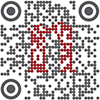| |||||
| |||||
| Hello Nature readers, | |||||
 | |||||
| Entanglement (illustration) is required for quantum computers to run algorithms. (Peter Jurik/Alamy) | |||||
'Tweezers' hold quantum moleculePhysicists have used lasers as 'optical tweezers' to position molecules so precisely that the molecules can be used as qubits to process quantum information. Pairs of calcium monofluoride molecules were gingerly manoeuvred so that they became entangled and behaved as a single collective quantum system. The molecules were cooled to close to absolute zero, making them almost completely still. When their rotation was completely stopped, they represented the '0' state of the qubit. Meanwhile, molecules allowed to rotate with just one quantum of rotational momentum represented the '1' state. Molecules have some advantages over other qubit candidates, such as atoms. For example, molecules could be pushed into service as 'qutrits', which have three possible states: −1, 0 and +1. Nature | 4 min readReference: Science paper 1 & paper 2 | |||||
CRISPR comes of ageThe first therapeutic applications of the CRISPR-Cas9 DNA-editing technique have only just received regulatory approval, but already scientists are looking to the next generation of CRISPR technologies. Single base editing, more flexible 'prime' editing, and editing of the genome to turn genes off or on are all showing promise in tackling a range of diseases, from cystic fibrosis to hepatitis B. Nature | 6 min read | |||||
NIH grad students and postdocs form unionHundreds of early-career researchers at the US National Institutes of Health (NIH) have voted overwhelmingly to form a union to help push for better pay and working conditions. With the union's membership comprising more than 5,000 research fellows, including graduate students and postdocs, the union will represent about 10% of the NIH's full-time workforce. "Any wins that we make will improve the working conditions for researchers across the country," says Rosa Lafer-Sousa, a postdoctoral fellow and neuroscientist at the NIH. Nature | 4 min read | |||||
| Want more? Update your preferences to sign up to our other free Nature Briefing newsletters focusing on the topics of translational research, cancer, AI & robotics and the anthropocene. Please visit your preferences page to choose which Nature Briefing newsletters to receive (or to unsubscribe). | |||||
Question of the weekEarlier this week, climate scientist Daniel Swain described how he put his research on hold to answer journalists' questions when wildfires engulfed California in 2020. He says that many others with relevant expertise would be prepared to do the same, but that a lack of support from institutions is holding them back. What do you think the role of climate researchers is in science communication and engagement? | |||||
| |||||
Method of the Year: in vitro embryo modelsIn vitro embryo models, supported by methods developed in adjacent fields, have started to shed light on the intricate mechanisms that control the development of a zygote into a fetus. | |||||
Futures: science fiction from NatureIn the latest short stories for Nature's Futures series:
| |||||
Podcast: World's smallest light trapResearchers have created a gap between two pieces of silicon that is just two nanometres across, about the width of a DNA molecule. This cavity is essentially a light-capturing device. And the smaller it is, the stronger the light–matter interaction — something scientists want to use for applications such as quantum computing. Photonics researcher Søren Stobbe tells the Nature Podcast how he and his team exploited the 'stickiness' of molecules that usually stands in the way of making ever-smaller cavities. Nature Podcast | 31 min listenSubscribe to the Nature Podcast on Apple Podcasts, Google Podcasts or Spotify, or use the RSS feed. | |||||
 | |||||
Quote of the day"If you can manage 30 angry players, it's a lot easier to manage a group of students in front of a classroom or deal with your colleagues in the lab."Mathematician Federico Fioravanti, who worked as a rugby referee before taking up a postdoctoral position in social choice theory, is just one of the scientists who told Nature about their first jobs and what they learnt from them. (Nature | 6 min read) | |||||
| | |||||
| |||||
| | |||||
| Want more? Update your preferences to sign up to our other free Nature Briefing newsletters:
| |||||
| |||||
| You received this newsletter because you subscribed with the email address: manojdole1.Lens@blogger.com Please add briefing@nature.com to your address book. Enjoying this newsletter? You can use this form to recommend it to a friend or colleague — thank you! Had enough? To unsubscribe from this Briefing, but keep receiving your other Nature Briefing newsletters, please update your subscription preferences. To stop all Nature Briefing emails forever, click here to remove your personal data from our system. Fancy a bit of a read? View our privacy policy. Forwarded by a friend? Get the Briefing straight to your inbox: subscribe for free. Want to master time management, protect your mental health and brush up on your skills? Sign up for our free short e-mail series for working scientists, Back to the lab. Get more from Nature: Register for free on nature.com to sign up for other newsletters specific to your field and email alerts from Nature Research journals. Would you like to read the Briefing in other languages? 关注Nature Portfolio官方微信订阅号,每周二为您推送Nature Briefing精选中文内容——自然每周简报。 Nature | The Springer Nature Campus, 4 Crinan Street, London, N1 9XW, United Kingdom Nature Research, part of Springer Nature. |
What matters in science | View this email in your browser Monday 11 December 2023 Hello Nature readers, Today, we gaze at what might be the largest known protein, learn about the first global deal on limiting emissions from food production and discover how publishing pressures create unusually prolific authors. A structure prediction for a massive protein discovered by computational biologist Jacob West-Roberts and his colleagues. (West-Roberts, J. et al./bioRxiv ) Not...


Comments
Post a Comment